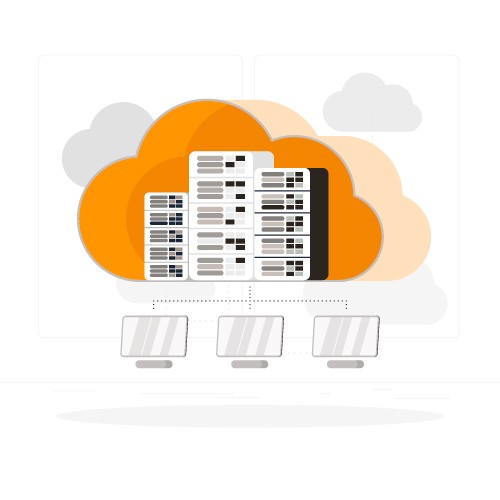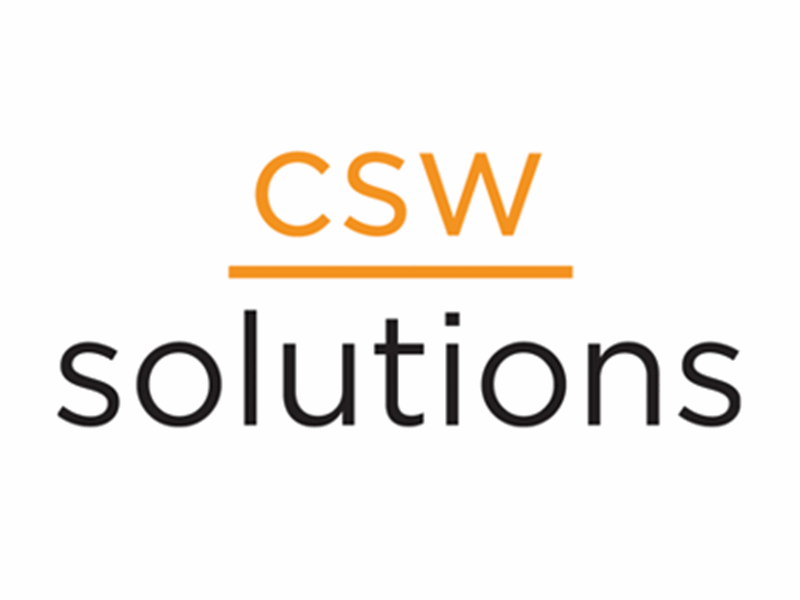Cloud migration and managed services are the best way to improve your business and operations. Read on to learn more about what CSW Solutions can do for you as your Gold-certified cloud solutions partner.
Cloud Readiness Assessment: 5 Steps to Assess Your Readiness
Moving to the cloud is a big undertaking, whether you're an enterprise or a small business. The cloud market has dramatically evolved with the rapid expansion of cloud-based services and software. Cloud computing is no longer just for startups or large enterprises; it is now accessible to businesses of all sizes.
In today's ever-evolving business landscape, cloud-based solutions offer immense scalability, cost-efficiency, and data security for any business to realize adaptability and find growth potential. However, taking the leap requires a thorough assessment of organizational needs and goals, resources available, and personnel expertise. In this blog article, we will discuss our five steps for businesses to assess their readiness for the cloud and make the best decision for their unique organization.
Considerations of a Cloud Readiness Assessment
The road to cloud migration is not a simple U-turn. There are so many details to consider beyond just the potential benefits and costs. When it comes to assessing your company's readiness, let's think of it like we're planning to hit the open road. A cloud readiness assessment will help you:
- Get all the right tools in order.
- Know where you're headed.
- Plan the route and anticipate any detours along the way.
- Check if you have enough gas in your tank to get there.
- Get everyone on board and ready for the change.
While not every organization is exactly alike, our 5-step framework can help you assess where your company currently stands and guide you through each step until you reach your destination and are ready to get the most out of cloud computing.
1. Define Your Goals and Objectives
The first step and most important one is to validate with your team that cloud computing is right for your business. Before making the switch to a cloud-based solution, it is essential to begin by defining your organization's goals and objectives. What are your business' pain points? What are you hoping to achieve by moving to the cloud? Answering these questions will give you a better understanding of which cloud solution is right for your business.
The reasons and benefits of cloud migration vary from company to company, but some of the most common motivations include cost savings, scalability, and improved security. The business goals of cloud migration can also differ depending on the needs of the organization. For example, a company may wish to reduce its IT costs by migrating to a cloud platform, while another may be looking to leverage the scalability of cloud services to expand its user base. Ultimately, the goal of cloud migration is to ensure that the organization can take advantage of the benefits associated with cloud technology while meeting its business objectives.
2. Know Your Resources
Before making the switch to the cloud, it is important to assess the resources your business has available. Do you have the right personnel in place to manage a cloud solution? Do you have the financial resources to invest in managing a cloud solution?
When it comes to cloud migration, it is important to identify the existing team's ability to make the transition. This includes understanding the team's technical knowledge and capabilities, as well as their experience working in a cloud environment. Additionally, it's important to assess the team's ability to adapt to new technologies and processes. It's also important to understand the team's communication and collaboration skills, as well as their ability to quickly learn and understand new concepts and technologies. Finally, it's important to determine the team's ability to work together effectively, both individually and as a group, in order to ensure a successful migration. By taking these factors into consideration for the cloud, organizations can ensure that their team is well-prepared for the cloud migration process. A thorough understanding of these assets and personnel knowledge will help you make a decision about whether or not the cloud is right for your business.
3. Assess Your Risks
When making any major decisions, every business is different, and there is no one-size-fits-all solution when it comes to the solutions available to your specific industry and needs in the cloud. By taking the time to assess your organization's readiness for the cloud, you can make an informed decision about which cloud solution is right for your business.
When considering a move to the cloud, security should be a top priority. Before you decide to migrate your data or applications to the cloud, it is important to thoroughly scrutinize the security requirements of the cloud service provider. This means looking into the provider's access control systems, encryption protocols, and threat detection capabilities. It is also important to look into the provider's incident response plan and data backup and recovery procedures. Taking the time to understand the provider's security features can help ensure that your data and applications are secure in the cloud. Additionally, it is important to ensure that your staff is trained on how to handle security risks and breach scenarios. This will help ensure that your organization is prepared for any unforeseen threats or incidents.
4. Understand the Types of Clouds
Not all clouds are created equal. There are three main types of clouds: public, private, and hybrid. Depending on your business needs, budgets and security concerns, one type of cloud may be a better fit than the others.
Public clouds are those operated by cloud service providers and are generally open to the public. With public clouds, users don’t need to buy or maintain any hardware, making them very cost-effective. However, public clouds can be less secure since the data is shared with other users.
Private clouds are owned and operated by a specific organization and are not open to the public. These clouds offer more control and security than public clouds, but they also require more resources and maintenance.
Hybrid clouds are a combination of public and private clouds. Hybrid clouds offer the benefits of both types of clouds, allowing for greater flexibility and cost savings. Hybrid clouds also allow for more secure data storage and can be used to run applications that require both public and private components.
Understanding the differences between the types of clouds will help you make an informed decision about which is right for your business. This will lead to a better understanding of compatibility requirements as you make sure all your hardware and software will be with the cloud platform you plan to use. It will also ensure that your migration team will be able to formulate the most comprehensive view of your path as you make your plan.
5. Make a Plan
After you have gone through the steps of assessing your organization's readiness for the cloud, it is time to make a plan. This plan should include which cloud solution you will use, a timeline for implementation, and a budget. By having a plan in place, you can make sure that your organization is ready for the cloud. Develop a plan that outlines the objectives of the migration, the timeline for completing the process, and any costs or risks associated with it.
Planning a budget for cloud migration can seem like a daunting task. The key is to create a budget that is realistic and well-planned, with the aim of minimizing any unexpected costs. The first step is to determine the scope of the project, including the number of applications and data that need to be migrated. This will help you to understand the complexity of the project and therefore the costs involved. After that, you should research the various cloud providers and their services to get an understanding of their capabilities and associated costs. It is also important to consider any additional costs such as training, storage, and maintenance. Once you have a clear understanding of the project scope and associated costs, you can create a budget that includes all the necessary items. Lastly, you should keep track of your expenses and regularly review your budget to make sure it is still accurate and relevant.
Why is Cloud Readiness Important?
It is important to do a cloud migration correctly in order to ensure that the process is successful and that data is secure. If a cloud migration is not done correctly, there can be serious consequences. Data can be lost, applications can fail to run, and security can be compromised. Additionally, an incorrect cloud migration can be time-consuming and expensive to fix, resulting in lost time and money.
At the same time, if a cloud migration is done correctly, it can provide businesses with significant benefits. Applications can run faster, costs can be reduced, and data can be stored more securely. For these reasons, it is essential to ensure that a cloud migration is done correctly in order to maximize the potential benefits and minimize the potential risks. Cloud and software in the cloud continue to transform business across the globe. With this evolution in technology, brands need to ensure they have developed a cloud strategy that makes the most of the resources afforded by cloud technologies.
Cloud migration is a complex process that requires careful planning and execution. What we have covered are the steps that can prepare you to take advantage of the speed, scalability, and cost savings of cloud computing. It is important to follow up on your cloud migration by testing and validating the new environment to ensure everything works as expected and to monitor and optimize your cloud environment on an ongoing basis to ensure it meets your business needs. That's why it is so important to find the right cloud solutions partner to help you assess and implement your cloud migration.
Founded over 17 years ago in Chicago, CSW has a history that is rich with cloud and custom software development experience. CSW has since led many small to enterprise-level organizations during their migration to hybrid, private and public cloud environments. We are always happy to help you achieve cloud success, so reach out to us to discuss further or schedule your digital transformation assessment today!

